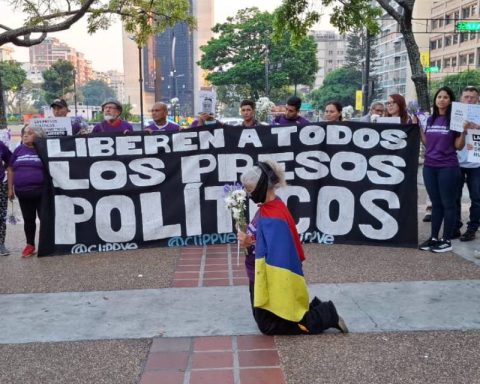The long queues of vehicles that usually occur on days of heavy traffic at the entrance to the port promenade will soon be a thing of the past. The viaduct work of almost 2 km long on the South America boulevard in the accesses to the port of Montevideo has a degree of completion of 95% and its completion is scheduled for July, although some secondary works will extend until September.
This Thursday the consortium Saceem Grinor organized a tour with authorities of the Executive Power and Fonplata to present the main advances of the project, which will mark a before and after in the organization of heavy cargo traffic and passenger vehicles that usually take that artery to enter the capital of the country.
The viaduct will divert the entry of trucks to the port, which will be carried out through the new north access and will separate the vehicular crossing at the level of the port boulevard with the Central Railroad track which is under construction. The works are part of the larger plan to expand the port, it exceeds US$ 140 million investment and came to employ 500 workers directly during its peak of activity; today there are just over 200 left.
The Commercial and Operations Vice President of Saceem, Alejandro Ruibal, declared at a press conference that the work is part of the entire change plan for the northern access to the port of Montevideo. “In some way, the old boulevard is being raised and its capacity is increased by 50%, since it will have three traffic lanes in each direction (previously it had two) that will run along the new viaduct,” he said.
In addition, he said that the “conflict” of the entrance of trucks -which will enter inside the port for the northern access- is resolved, as well as the railway, which will pass under the arch bridge in two places, one for the new UPM pulp in the port and another for the container and grain terminal.
“The port is going to order all its access and it will have the characteristics of a modern terminal,” Ruibal said.
The Transport Minister José Luis Falero He commented at a press conference that the work began at the beginning of 2020 and that, given the pace of execution, it can be thought that its completion will be by July, the date on which traffic will be enabled through the new viaduct.
“It is a work that will completely change access to the port and will also improve access for light vehicles entering the city,” Falero said.
The chief stated that the initial investment amount of the project is about US$ 140 million but, if the complementary sanitation works are added, that number will be higher.
For his part, the president of the fonplata, the organization that financed part of the work —about US$ 50 million—, Juan Notarosaid that it is an “emblematic work” for his institution because of what it implies for Montevideo, but also for all the initiatives of the waterway that the bank is financing in other countries of the region (Paraguay, Brazil and Argentina) to improve logistics and transportation.
What advantages will the work have?
One of the advantages that the viaduct will have will be that a series of traffic lights will be eliminated for passenger vehicles that were previously installed for access to different points of the port of Montevideo on the boulevard.
What’s more, 5 hectares were reclaimed from the sea for the realization of different esplanades. It It will allow a double lane for the entry and exit of trucks to the country’s main port terminal.
For the assembly of the five sections of the deck of the viaduct bridge, a 600-ton crane and other auxiliaries were used. The deck is supported by nine hangers (braided steel cables) that are attached to the arch. Lhe bridge structure weighs 1,250 tons.
Camilo dos Santos
Viaduct work
The work of the viaduct included many underground works in terms of water drainage from the neighborhoods in the area, as well as electrical energy with the substations and UTE stations in the area.
The director of OPP, Isaac Alfie, the president (Juan Curbelo) and vice president (Daniel Loureiro) of the National Ports Administration (ANP) also participated in the tour.
















